Edo period (1615-1868), 17th to 18th century
All iron; the first of tate-itomakigata (silk-winder) form with sumikiri corners, the iron forged with a mokume texture, signed Soshu Odawara no ju on one side and with an illegible character on the reverse; the second circular, inlaid in brass around the circumference in a mukade (centipede) pattern; the third circular, chiselled and pierced with a mutsume-ami (hexagonal plaiting) pattern, signed Echizen no ju Kinai; the fourth circular, Myochin style, outsize, with 24 petal-like piercings and a broad raised dotemimi rim, the kogai-ana plugged; the fifth in the form of a skull, with a raised rim and two udenuki-ana; the sixth circular, pierced with two tomoe (comma) shapes. The smallest: 7cm (2¾in) high; the largest: 11.2cm (4 3/8in) high. (6).
Edo period (1615-1868), 17th to 18th century
All iron; the first of tate-itomakigata (silk-winder) form with sumikiri corners, the iron forged with a mokume texture, signed Soshu Odawara no ju on one side and with an illegible character on the reverse; the second circular, inlaid in brass around the circumference in a mukade (centipede) pattern; the third circular, chiselled and pierced with a mutsume-ami (hexagonal plaiting) pattern, signed Echizen no ju Kinai; the fourth circular, Myochin style, outsize, with 24 petal-like piercings and a broad raised dotemimi rim, the kogai-ana plugged; the fifth in the form of a skull, with a raised rim and two udenuki-ana; the sixth circular, pierced with two tomoe (comma) shapes. The smallest: 7cm (2¾in) high; the largest: 11.2cm (4 3/8in) high. (6).




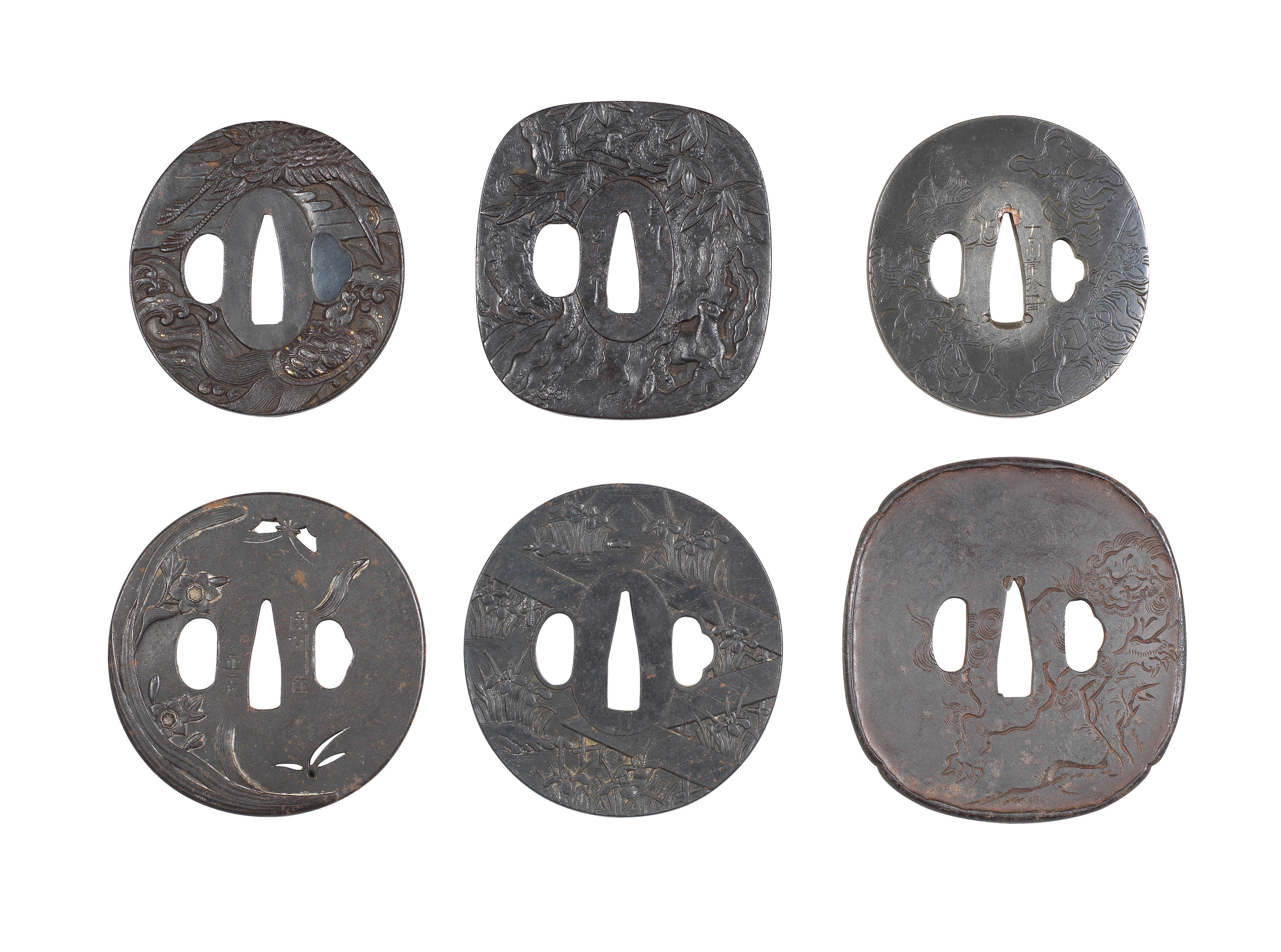
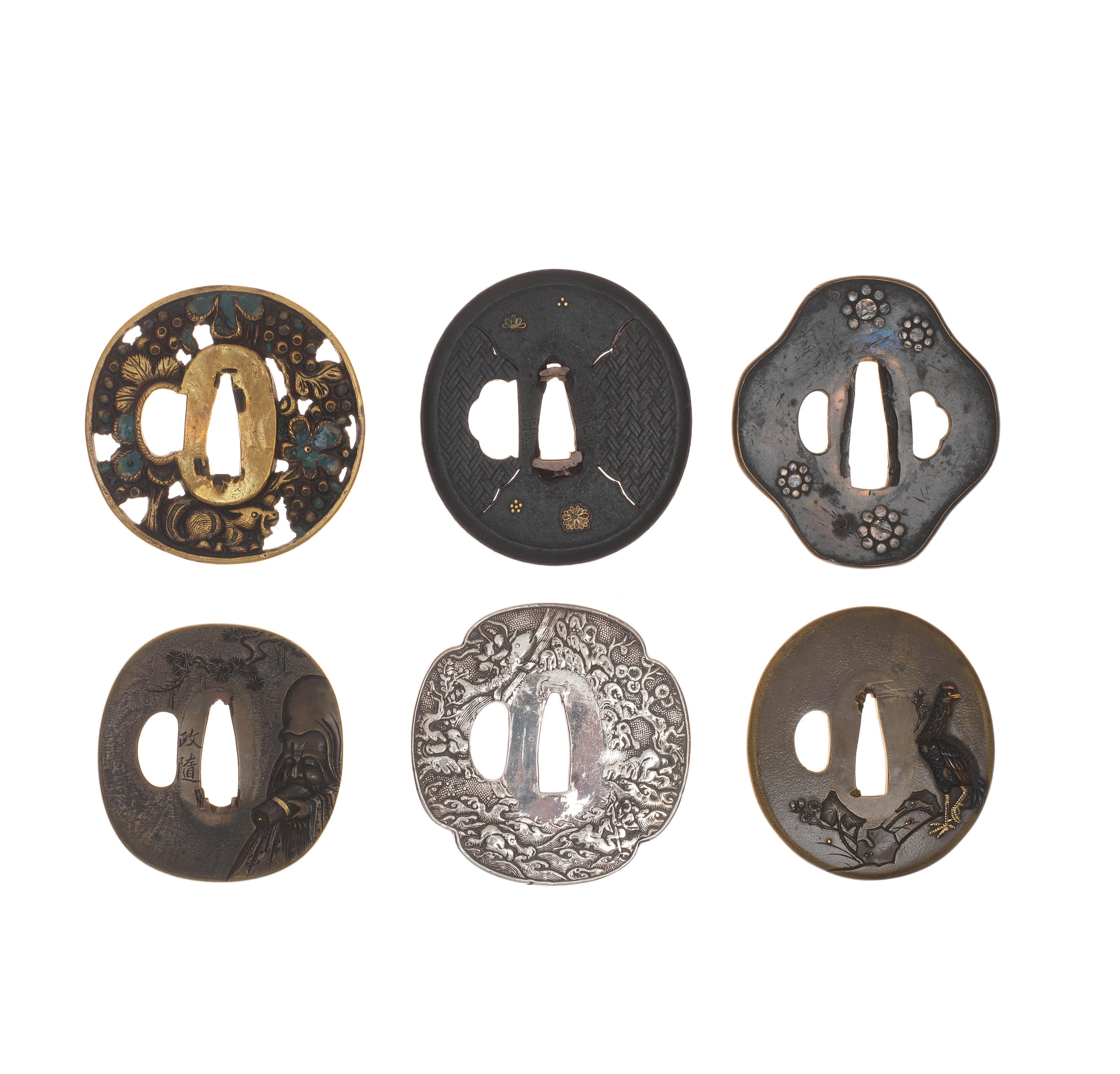
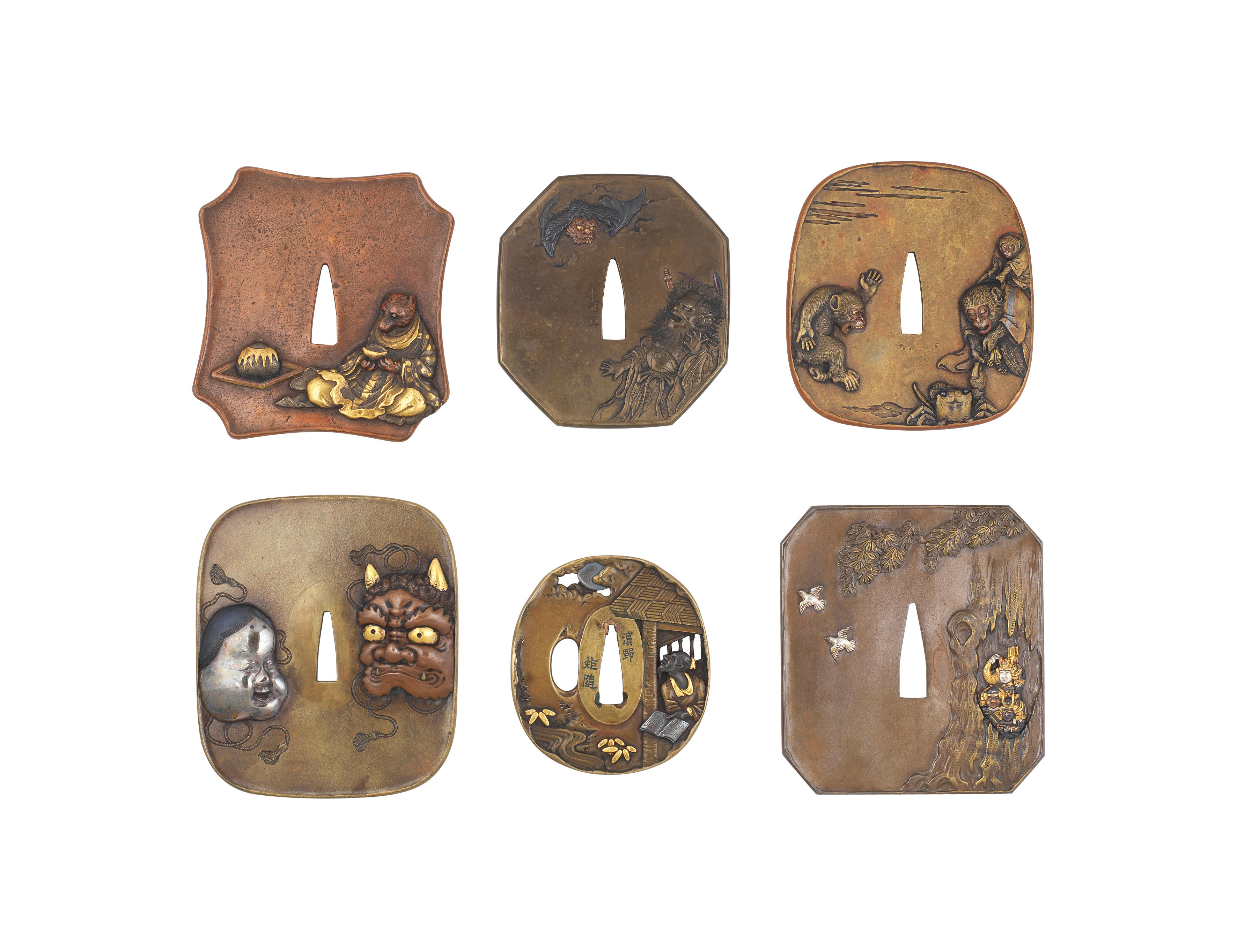
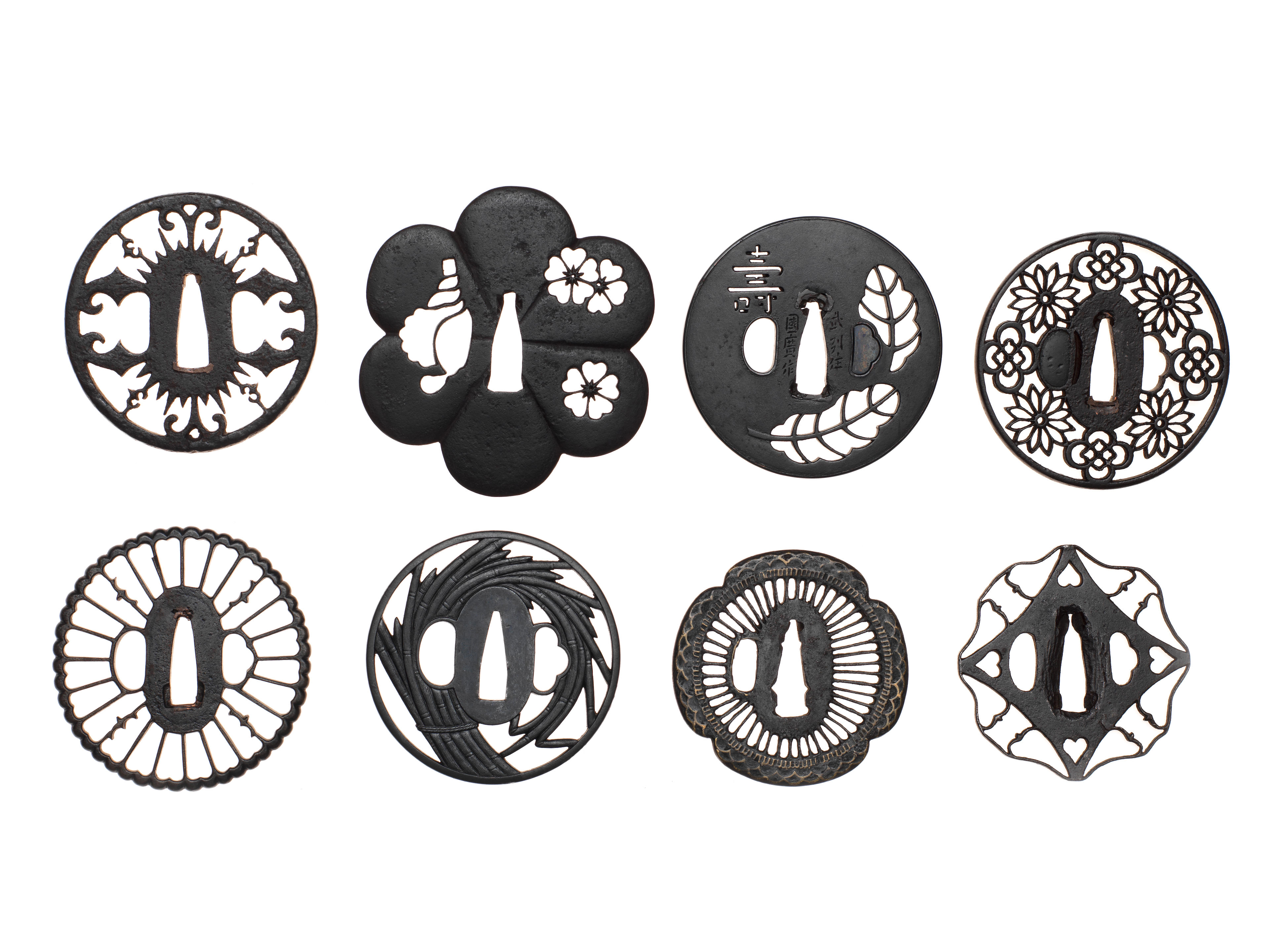
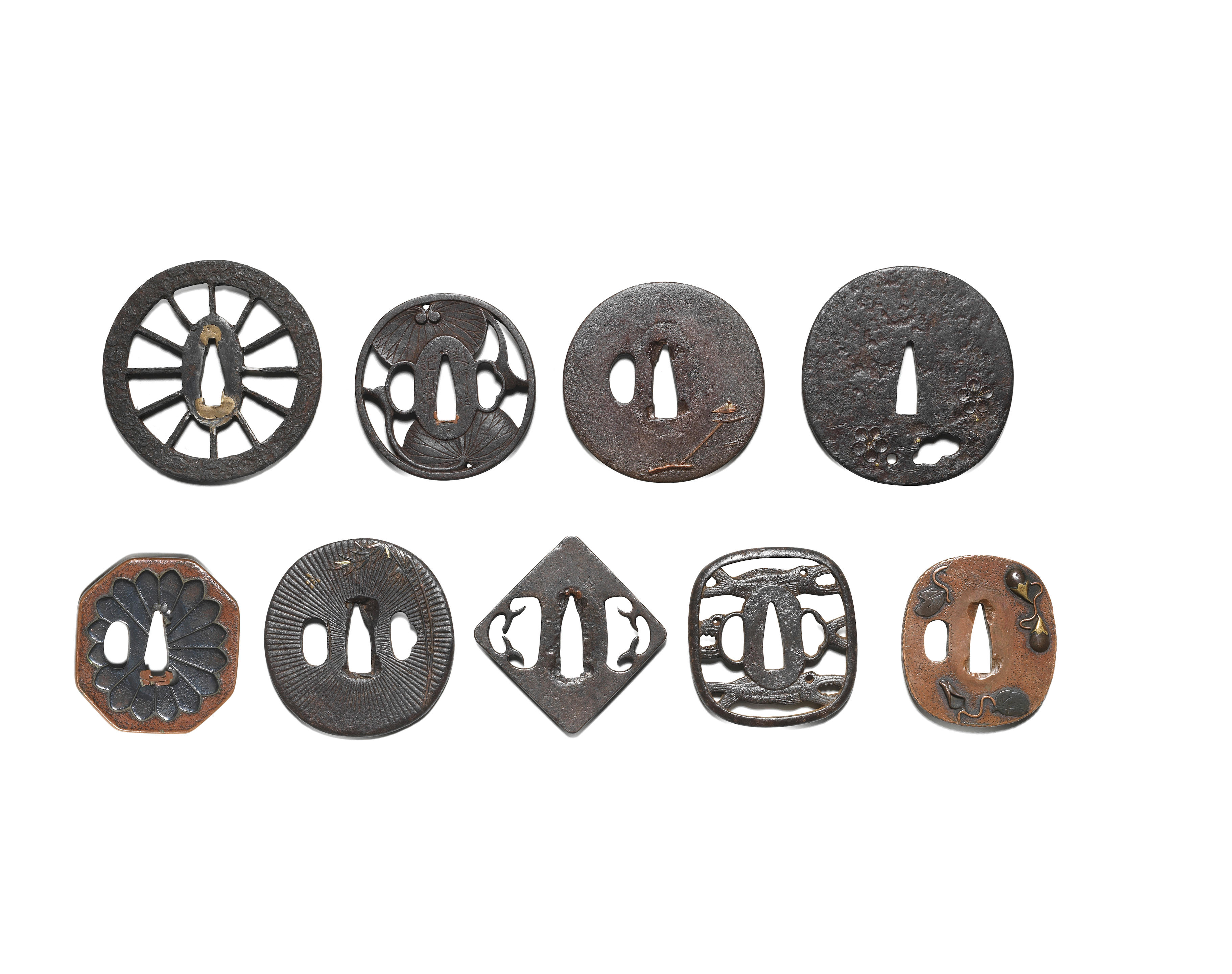






Testen Sie LotSearch und seine Premium-Features 7 Tage - ohne Kosten!
Lassen Sie sich automatisch über neue Objekte in kommenden Auktionen benachrichtigen.
Suchauftrag anlegen